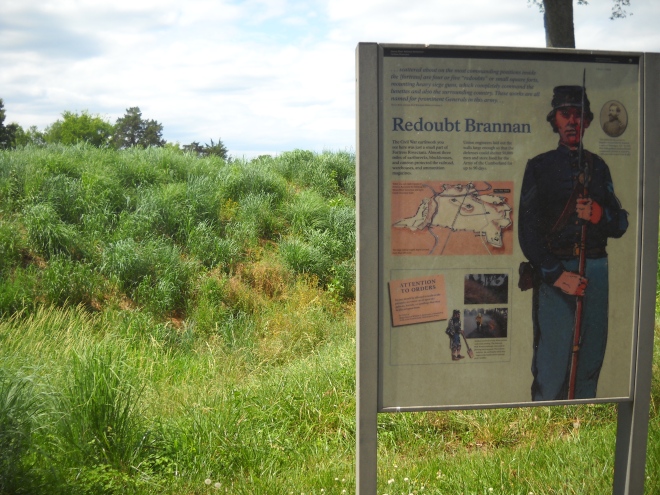 On December 26, 1862, General William Rosecrans (Union) marched his Army of the Cumberland thirty miles from Nashville, Tennessee towards Murfreesboro, Tennessee. Today this is an easy drive from Nashville to Stones River National Battlefield. I begin my day at the Visitor Center where I view the exhibits and thirty-minute film explaining the circumstances and importance of the battle. At the end of 1862, President Abraham Lincoln desperately needed a Union victory to boost morale and ensure enforcement of the Emancipation Proclamation taking effect January 1, 1863. From December 31, 1862 through January 2, 1863 the Confederate and Union armies, 81,000 men, waged a fierce and deadly battle at Stones River. After each side lost nearly one-third of its men, General Braxton Bragg and his Confederate Army of Tennessee withdrew from Murfreesboro.
On December 26, 1862, General William Rosecrans (Union) marched his Army of the Cumberland thirty miles from Nashville, Tennessee towards Murfreesboro, Tennessee. Today this is an easy drive from Nashville to Stones River National Battlefield. I begin my day at the Visitor Center where I view the exhibits and thirty-minute film explaining the circumstances and importance of the battle. At the end of 1862, President Abraham Lincoln desperately needed a Union victory to boost morale and ensure enforcement of the Emancipation Proclamation taking effect January 1, 1863. From December 31, 1862 through January 2, 1863 the Confederate and Union armies, 81,000 men, waged a fierce and deadly battle at Stones River. After each side lost nearly one-third of its men, General Braxton Bragg and his Confederate Army of Tennessee withdrew from Murfreesboro.
 The six stops on the self-guided auto touring route include some with short walking trails. I change from sandals to hiking shoes, spray down my body and clothing with bug repellent, and immerse my imagination into the images of a bloody, heart-breaking war where brother fought brother and friend fought friend. I visit Hell’s Half Acre where Union Colonel William Hazen lost 400 men on December 31, 1862. Survivors of the battle built the Hazen Brigade Monument in 1863 making it one of the oldest Civil War memorials. I visit the markers indicating the sites of General Rosecrans’ and General Bragg’s Headquarters. I visit Stones River National Cemetery where over 6,100 Union soldiers are buried.
The six stops on the self-guided auto touring route include some with short walking trails. I change from sandals to hiking shoes, spray down my body and clothing with bug repellent, and immerse my imagination into the images of a bloody, heart-breaking war where brother fought brother and friend fought friend. I visit Hell’s Half Acre where Union Colonel William Hazen lost 400 men on December 31, 1862. Survivors of the battle built the Hazen Brigade Monument in 1863 making it one of the oldest Civil War memorials. I visit the markers indicating the sites of General Rosecrans’ and General Bragg’s Headquarters. I visit Stones River National Cemetery where over 6,100 Union soldiers are buried.
After the Union victory at Stones River, Rosecrans’s army and hundreds of former slaves built a fort at Murfreesboro. I make the short drive to Fortress Rosecrans. The original 200-acre Fortress Rosecrans was huge and built almost entirely of earthworks. Three miles of earthworks! That’s a lot of digging! The fort could shelter 15,000 troops and store supplies for 65,000 men. In fact, Fortress Rosecrans enclosed four small forts as well as powder magazines and storehouses. Even after studying the excellent map exhibit at the visitor center; I am overwhelmed at the immensity of the relatively small portion of earthworks still standing.  Redoubt Brannon, one of the four small forts, has been preserved with walking trails and wooden overlooks. I explore as much as I can before my bug repellent wears off and I need to return to my car and continue down the road.
Redoubt Brannon, one of the four small forts, has been preserved with walking trails and wooden overlooks. I explore as much as I can before my bug repellent wears off and I need to return to my car and continue down the road.
